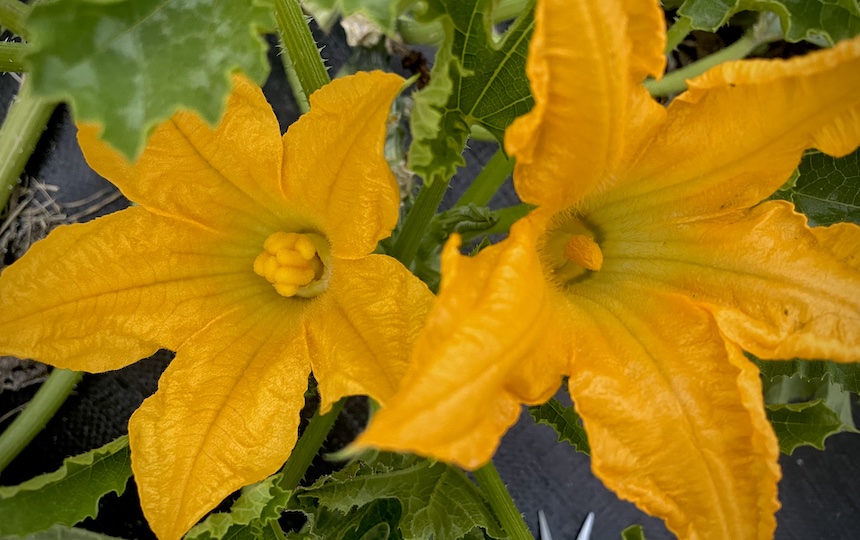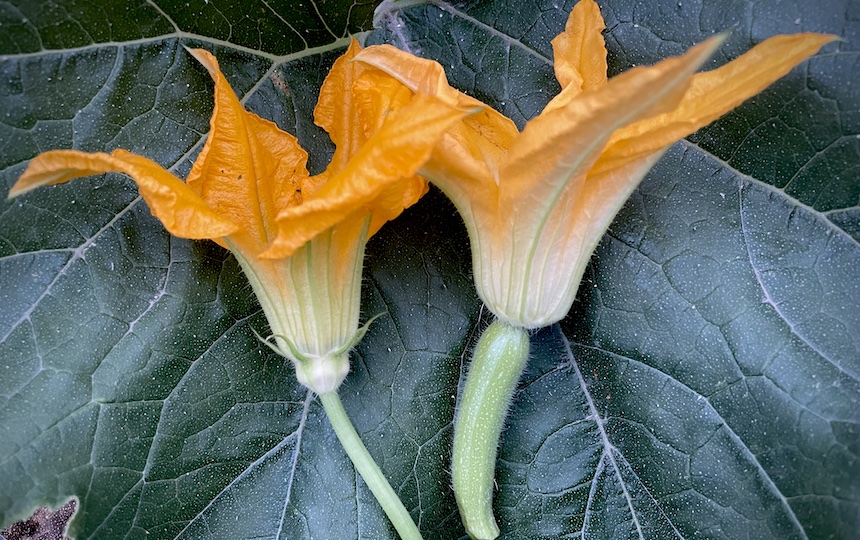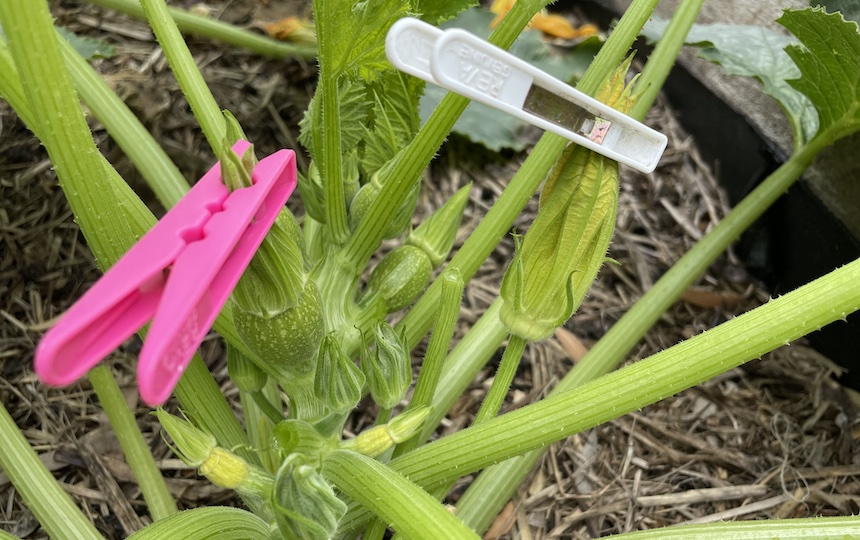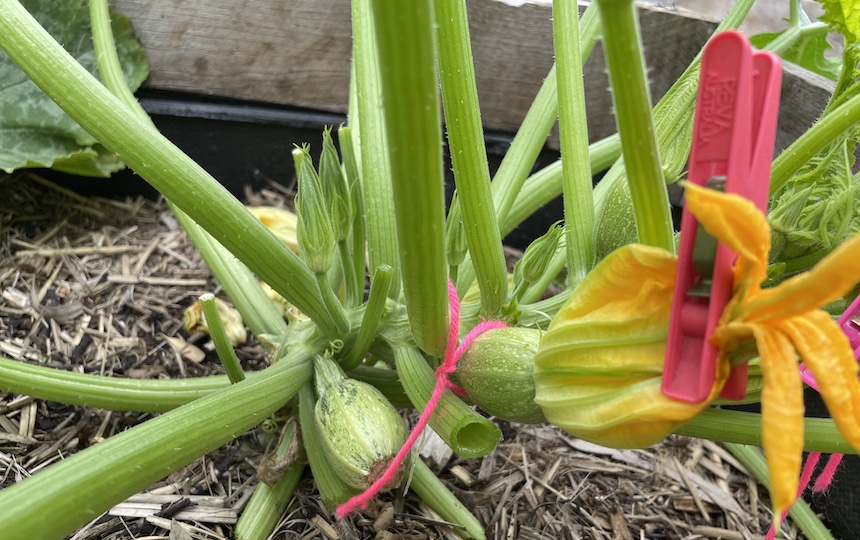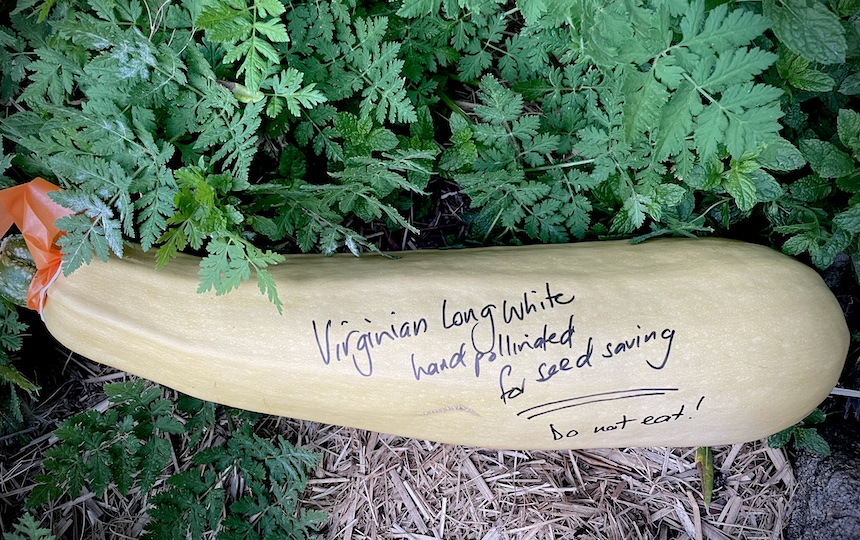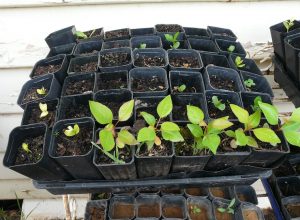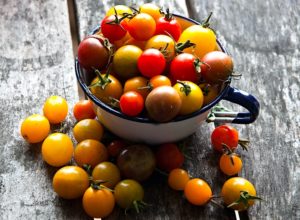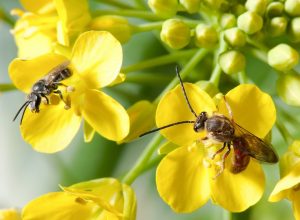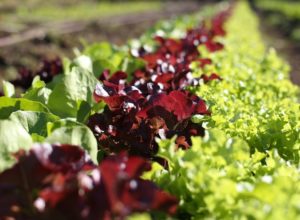By hand pollinating your cucurbit flowers you can ensure the seeds you save from the resulting fruit will always be true to type.
The Cucurbitaceae family, which consists of zucchini, pumpkin, cucumber, melons, gourds, luffa and marrows, is one of the most promiscuous genus of plants.
Their insatiable desire to cross-pollinate with one another makes them almost impossible to save seed that will stay true to type.
But by observing, isolating and hand pollinating the flowers on your favourite or most flavoursome variety, you’ll be able to save, grow and share seeds for many years to come.
Hand pollinating cucurbits
A huge family of almost 1,000 species, annual cucurbits are almost always cross-pollinated by bees so, unless you can ensure there’s no other variety within coo-ee (which we can’t) the seeds you save will nearly always be a cross between your plant and another nearby.
By hand pollinating your cucurbit flowers, if you love the flavour of a specific pumpkin or growth habit of a certain cucumber in your garden, then you can ensure the seeds you save from the resulting fruit will always be true to type.
Identifying male and female flowers
To successfully hand pollinate a cucurbit, you need a female flower and at least three male flowers from the same species. To identify the sex of your flower, look at the base of the flower where it meets the stem. On a female flower, you’ll see a small, immature-looking fruit on a shorter stem, while a male flower will be on a normal-looking stem that’s generally longer, which allows them to sit a bit higher up so are easier to see for pollinators to visit first.
To increase the chance of pollination, cucurbits will often produce more male flowers early in the season, before producing a mix of male and female flowers. You’ll know the male flowers are ripe for hand pollinating when the yellow pollen shakes loose from the flower, but there’s a couple of steps to make sure they stay pure.
The day before
The day before you plan to hand pollinate, identify examples of both unopened male and female flowers that look like they’re just about to open. These flowers will be large with yellow edges and won’t have opened up yet.
To keep them free of bees, and therefore pollen transfer from other plants, you need to gently pinch all the petals together at the top and peg the flowers closed.
Preparing for pollination
The following morning is pollinating time. You can pick all the pegged male flowers off the plant – once you’ve hand pollinated the female flowers, you won’t need them again.
You’ll find that the petals have ballooned in their attempt to open and the pollen inside is ready, so once you’ve unpegged the male flowers, carefully peel off the petals to reveal the anther, which is the long part in the centre of the flower that holds the pollen, to form a “pollen paintbrush”.
You want to do this to a few pegged male flowers as this will offer genetic diversity to the female flower receiving the pollen, which will result in stronger, healthier seed.
Hand pollinating your flowers
Carefully take the peg from your female flower and gently open the flower petals. Wipe the male’s anther all over the female’s stigma, which is the yellow part inside the flowers that looks a bit like a brain.
Once done, gently close the female flower back up, taking care to seal well, before placing the peg back on the petals back on the petals to secure. For added security of your flower, you can place a paper bag or net bag over the flower to ensure no insects drop unwanted pollen in from another species.
Secure and label
Once pollinated and secured, you’ll need to label your flower so you’ll know which one not to pick once fruit starts appearing. Place a piece of brightly coloured string or wool loosely and gently around the stem so you will know to leave it be while harvesting your other fruit as they appear.
You can keep harvesting other fruit from the plant, but it’s a good idea to make sure everyone in your family knows what the label represents and to allow that particular fruit to continue to grow on the plant.
Setting seed
Because we tend to eat a lot of our vegies when they’re still immature – think of the size we tend to pick our zucchinis compared to the size they can reach if left to their own devices – it’s important to allow the fruit to reach full size, and then keep it on the bush for another two or three weeks to allow the seed to mature.
At this point you’ll notice the plant’s fruit production slows as it turns its energy towards producing viable seed.
Saving the seed
Cut open your fruit and scoop out the seeds before rinsing well to remove any flesh. Spread out on a tea towel or a piece of parchment paper to dry for seven to 10 days before transferring them into a paper bag to ensure they’re completely dry before storage.
Stored in a cool, dark place, cucurbit seeds should remain viable for at least five years. Of course, pumpkins and melons can still be eaten once the saved seeds have been removed, but for fully mature zucchini and cucumbers, the flesh can be given to chooks or chopped finely to be shared with your worm farm and compost.

